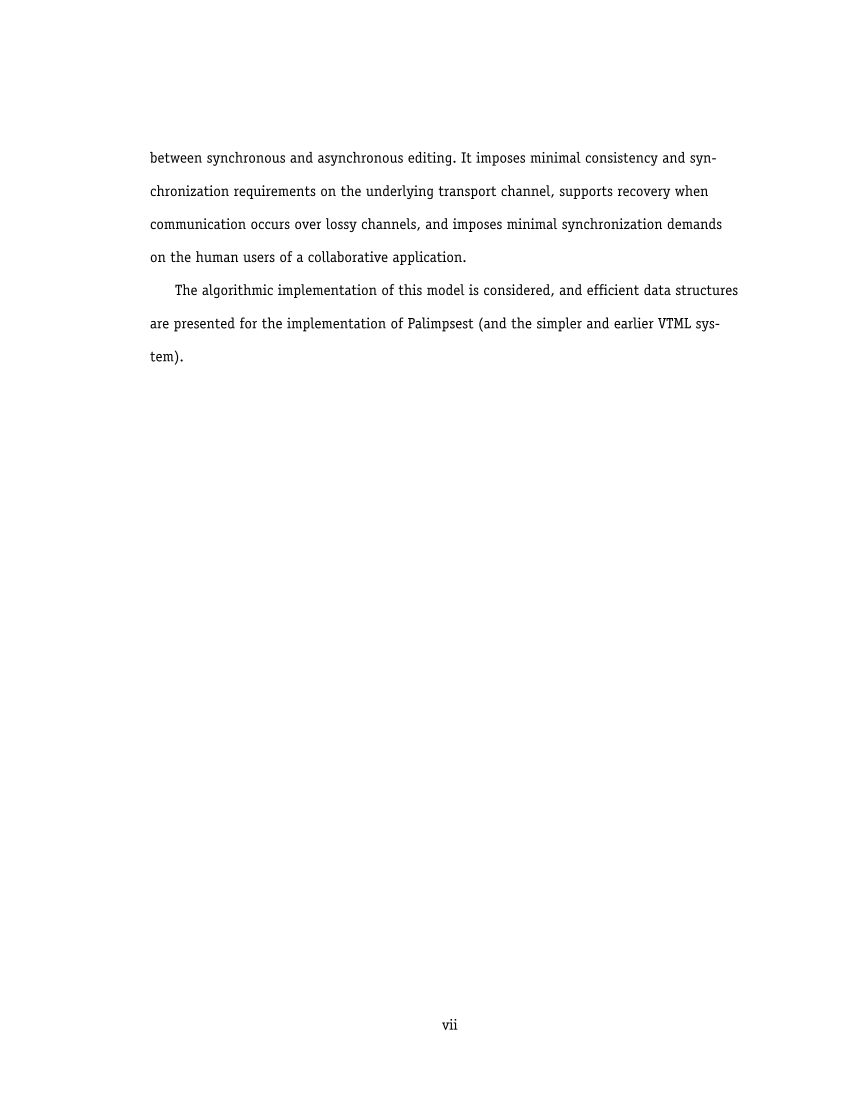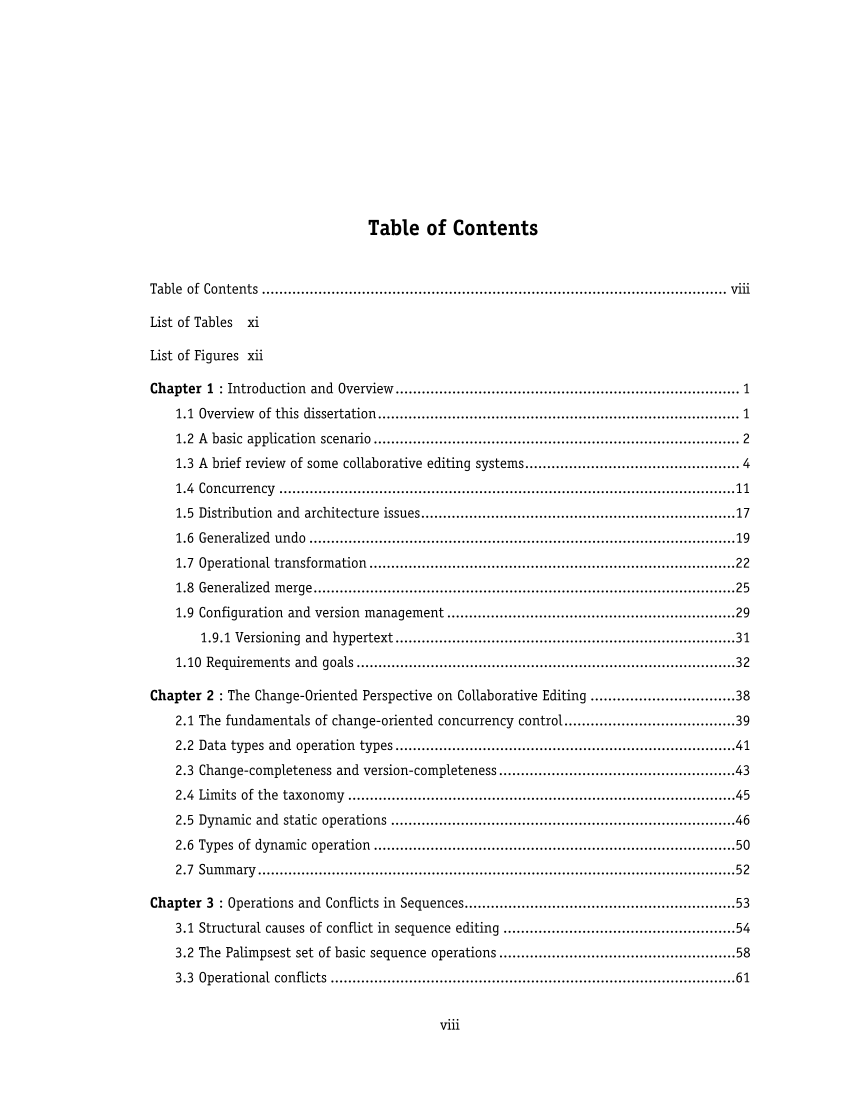vii
between�synchronous�and�asynchronous�editing.�It�imposes�minimal�consistency�and�syn-
chronization�requirements�on�the�underlying�transport�channel,�supports�recovery�when
communication�occurs�over�lossy�channels,�and�imposes�minimal�synchronization�demands
on�the�human�users�of�a�collaborative�application.
The�algorithmic�implementation�of�this�model�is�considered,�and�efficient�data�structures
are�presented�for�the�implementation�of�Palimpsest�(and�the�simpler�and�earlier�VTML�sys-
tem).
between�synchronous�and�asynchronous�editing.�It�imposes�minimal�consistency�and�syn-
chronization�requirements�on�the�underlying�transport�channel,�supports�recovery�when
communication�occurs�over�lossy�channels,�and�imposes�minimal�synchronization�demands
on�the�human�users�of�a�collaborative�application.
The�algorithmic�implementation�of�this�model�is�considered,�and�efficient�data�structures
are�presented�for�the�implementation�of�Palimpsest�(and�the�simpler�and�earlier�VTML�sys-
tem).





























































































































































































